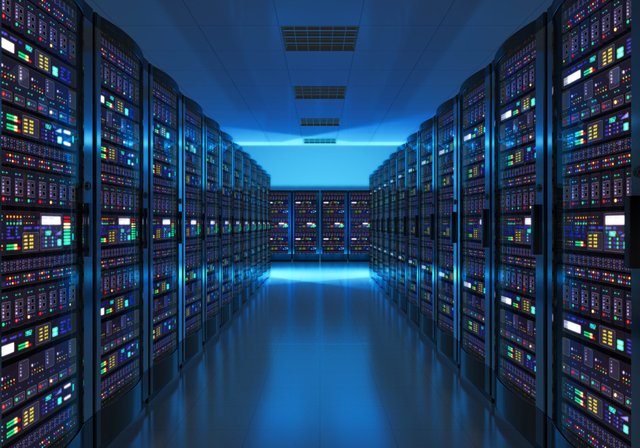7 Impacts of Rack Servers on Latency and Performance
Rack servers have become a crucial element in data centers, offering numerous advantages in terms of scalability, space efficiency, and manageability. These servers are specifically built to be mounted in a standard 19-inch rack, enabling a high density of computing power in a compact space.

Regarding latency and performance, rack servers can play a significant role, either improving or, in some cases, restricting a system's overall capabilities.
According to Lenovo, Rack servers with SNAP I/O configurations show up to a 24% improvement in bandwidth performance for 100GbE NICs compared to traditional setups that use remote CPUs.
Therefore, in this article, we’ll examine seven important ways that rack servers influence latency and performance, ensuring the language remains clear and straightforward for easy comprehension.
1. Efficient Resource Allocation
Rack servers are typically used in environments where large amounts of data processing and high-speed connectivity are required. One of the primary ways they impact latency and performance is through efficient resource allocation.
Since rack servers often house multiple processors, memory units, and storage devices, they allow for optimized resource distribution across a network.
Reason: Efficient resource allocation helps ensure that computing tasks are processed without unnecessary delays, reducing latency and improving overall performance.
In comparison to standalone servers, which may not have the same level of resource management, rack servers offer quicker processing speeds and better responsiveness.
2. High-Density Configuration
Rack servers are designed to fit into a 19-inch rack, which allows for the installation of multiple servers in a compact space. This high-density configuration is ideal for businesses and data centers that require the capacity to handle large volumes of data and ensure performance consistency.
Reason: With more servers installed in a single rack, there is less physical distance between components. This setup reduces the communication time between different servers and systems, leading to faster data processing and reduced latency.
The proximity of the servers enhances performance by allowing quicker interactions between processing units and storage devices.
3. Optimized Cooling Systems
Cooling is a crucial aspect of maintaining the performance of rack servers. These servers generate significant heat due to their high processing power. Many rack servers are equipped with efficient cooling systems to maintain optimal temperatures and prevent overheating, which can cause performance degradation or even server failure.
Reason: Proper cooling ensures that the servers can operate at their full potential without throttling performance due to excessive heat. Reduced thermal constraints lead to better performance and faster processing times, which directly impact latency.
Overheated servers may cause slower response times and increased latency, but well-cooled systems maintain stable performance.
4. Reduced Network Latency with Direct Connections
Rack servers often rely on high-speed direct network connections, which can significantly reduce network latency. In many cases, data centers with rack servers utilize fiber optic cables or other high-speed communication protocols to ensure that data transfers between servers are as quick as possible. The rack solutions say that the rack server reduces the network latency, allowing data to pass and access easily.
Reason: Direct, high-speed network connections help reduce the time it takes for data to travel between servers, thus lowering the overall latency of a network.
The closer servers are to each other in terms of network connection, the faster the communication and data transfer, which results in better performance for applications and services running on these servers.
5. Scalability and Performance Flexibility
One of the main advantages of rack servers is their scalability. As a business grows or the need for more computing power increases, additional servers can be easily added to the existing rack. This scalability allows for continuous improvements in performance without significant disruptions.
Reason: Scaling up the number of rack servers in a data center enables businesses to distribute workloads more efficiently. With more processing power available, tasks can be handled in parallel, reducing bottlenecks and improving overall performance.
Scalability also allows for more resources to be allocated when needed, which helps in minimizing latency during peak demand times.
6. Simplified Maintenance and Upgrades
Maintaining and upgrading rack servers is generally more straightforward than maintaining and upgrading traditional standalone servers. Since they are mounted in a single rack, technicians can access and service all servers at once, reducing the time needed for repairs and upgrades.
Reason: Easier maintenance leads to minimal downtime, which is critical in environments where performance and low latency are essential. Quick upgrades and repairs help maintain a consistent level of performance without introducing delays.
The more efficient the maintenance process, the less downtime there is, and the more stable the server’s latency and overall performance become.
7. Power Efficiency
Rack servers are designed to be energy-efficient, helping reduce operational costs while also maintaining performance levels. With the growing demand for more data processing, power consumption becomes an important factor to consider. Many modern rack servers are optimized for low power usage without compromising on performance.
Reason: Reduced power consumption helps prevent potential performance issues caused by power surges or failures. Also, when servers are more power-efficient, they can remain operational for longer periods without overheating or using excessive energy.
This directly impacts the server's ability to perform at peak levels, resulting in lower latency and more reliable overall performance.
Conclusion
Rack servers play a crucial role in enhancing both latency and performance in modern data centers. Due to their efficient resource allocation, high-density configuration, optimized cooling, and reduced network latency, they are specifically designed to meet the growing demands of businesses and data-intensive applications. Furthermore, the scalability and ease of maintenance make rack servers an appealing choice for companies seeking flexibility and reliability in their infrastructure.
Whether you are managing a small business or operating a large-scale enterprise, it is vital to understand how rack servers influence latency and performance to ensure your systems run efficiently. In addition, as technology continues to evolve, the advantages of using rack servers to minimize latency and boost performance will undoubtedly become more significant.